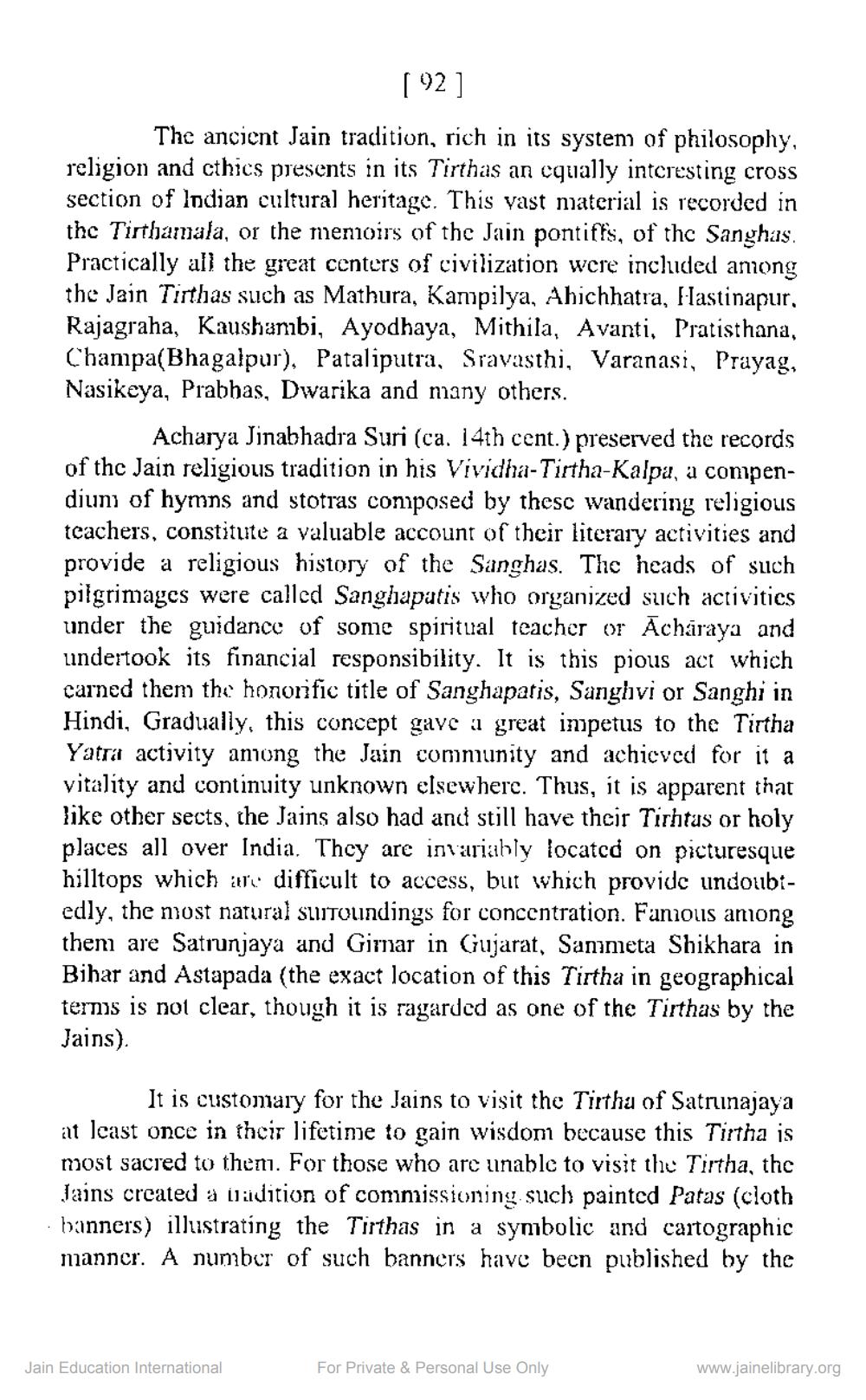Book Title: Jain Monumental Paintings of Ahmedabad Author(s): Shridhar Andhare Publisher: ZZ_Anusandhan View full book textPage 2
________________ [92] The ancient Jain tradition, rich in its system of philosophy, religion and cthics presents in its Tirthas an equally interesting cross section of Indian cultural heritage. This vast material is recorded in the Tirthamala, or the memoirs of the Jain pontiffs, of thc Sanghas. Practically all the great centers of civilization were included among the Jain Tirthas such as Mathura, Kampilya, Ahichhatra, Hastinapur. Rajagraha, Kaushambi, Ayodhaya, Mithila, Avanti, Pratisthana, Champa(Bhagalpur), Pataliputra, Sravasthi, Varanasi, Prayag, Nasikeya, Prabhas, Dwarika and many others. Acharya Jinabhadra Suri (ca. 14th cent.) preserved the records of the Jain religious tradition in his Vividha-Tirtha-Kalpa, a compendiuni of hymns and stotras composed by these wandering religious teachers, constitute a valuable account of their literary activities and provide a religious history of the Sanghas. The heads of such pilgrimages were called Sanghapatis who organized such activities under the guidance of some spiritual teacher Or Achāraya and undertook its financial responsibility. It is this pious act which carned them the honorific title of Sanghapatis, Sanghvi or Sanghi in Hindi, Gradually, this concept gave a great impetus to the Tirtha Yatra activity among the Jain community and achieved for it a vitality and continuity unknown elsewhere. Thus, it is apparent that like other sects, the Jains also had and still have their Tirhtas or holy places all over India. They are invariably located on picturesque hilltops which are difficult to access, but which provide undoubiedly, the most natural suutoundings for concentration. Fanious among them are Satrunjaya and Gimar in Gujarat, Sanmeta Shikhara in Bihar and Astapada (the exact location of this Tirtha in geographical terms is not clear, though it is ragarded as one of the Tirthas by the Jains). It is customary for the Jains to visit the Tirtha of Satrunajaya at least once in their lifetime to gain wisdom because this Tirtha is most sacred to them. For those who are unable to visit the Tirtha, the Jains created a nudition of commissioning such painted Patas (cloth banners) illustrating the Tirthas in a symbolic and cartographic manner. A number of such banners have been published by the Jain Education International For Private & Personal Use Only www.jainelibrary.orgPage Navigation
1 2 3 4 5 6 7 8
